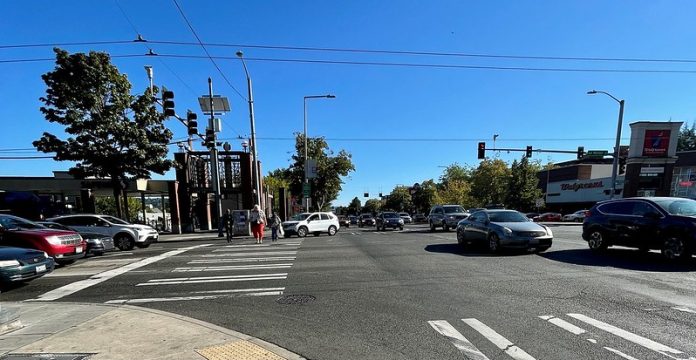
The Seattle Department of Transportation (SDOT) has announced an expanded scope of work for its planned repaving project along 15th Avenue NW, through the heart of Ballard and on the deck of the Ballard Bridge. The new elements, intended to improve pedestrian access and increase safety, came in response to a call from advocacy groups that criticized the original plans moving forward over the past year as not doing enough to incorporate the city’s Vision Zero work.
The project, which is set to start pre-construction by the end of the year, will now include a new signal allowing people walking and rolling to cross the street at NW 51st Street, a new southbound transit-only lane along two stretches of 15th Avenue NW, and most notably a new landscaped median along the street from NW 54th Street to NW 50th Street. That median, which SDOT says will “calm driver speeds and reduce the likelihood of serious crashes,” will go a long way toward getting the roadway more aligned with what it is intended to be on paper: one that “clearly communicates that walking, biking, and transit access are prioritized.”
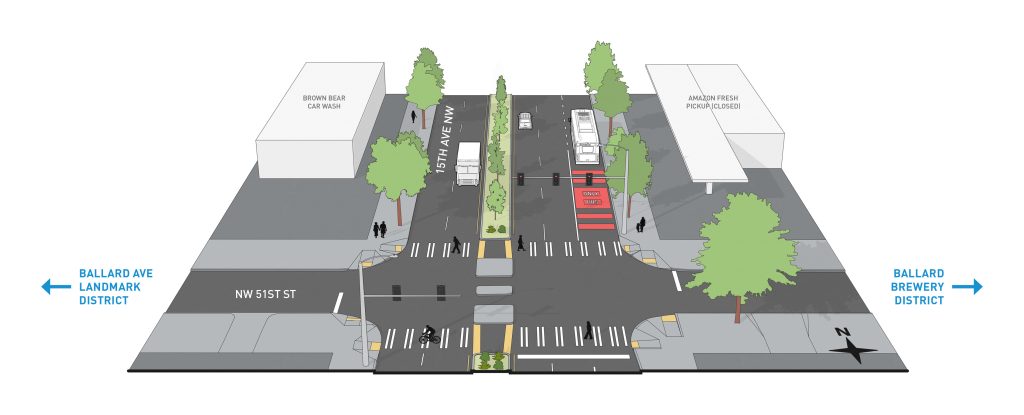
Last fall, when The Urbanist obtained the project’s “Complete Streets” checklist, a document SDOT fills out for every transportation improvement project in the city to ensure that no required elements are left out, it was conspicuous for having minimal planned pedestrian or safety-oriented improvements. Spot sidewalk repairs would be completed as well as legally-required Americans with Disabilities Act (ADA) accessible curb ramps, but the geometry of the street — which is on the city’s newly identified High Injury street network — would mostly remain unchanged.
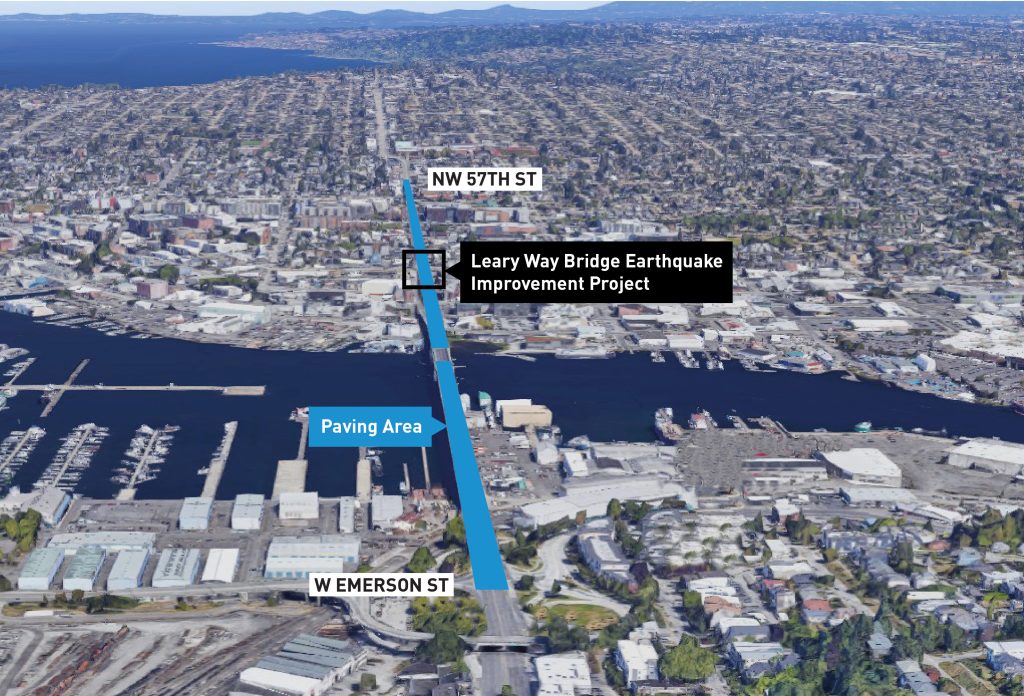
In fact, the Complete Streets checklist included a recommendation to study closing several adjacent cross-streets around high traffic NW Market Street to pedestrian cross traffic, a move the department ultimately didn’t follow through on.
Safe streets advocates and groups like Ballard-Fremont Greenways grabbed the opportunity to advocate for an expanded scope for the project early in the design and timing — happening just as SDOT was undergoing a “top to bottom” review of its Vision Zero program, with most of the city watching to see concrete actions on safety — was fortuitous. In November, a team from SDOT toured the project area to look at what else they might be able to add in.
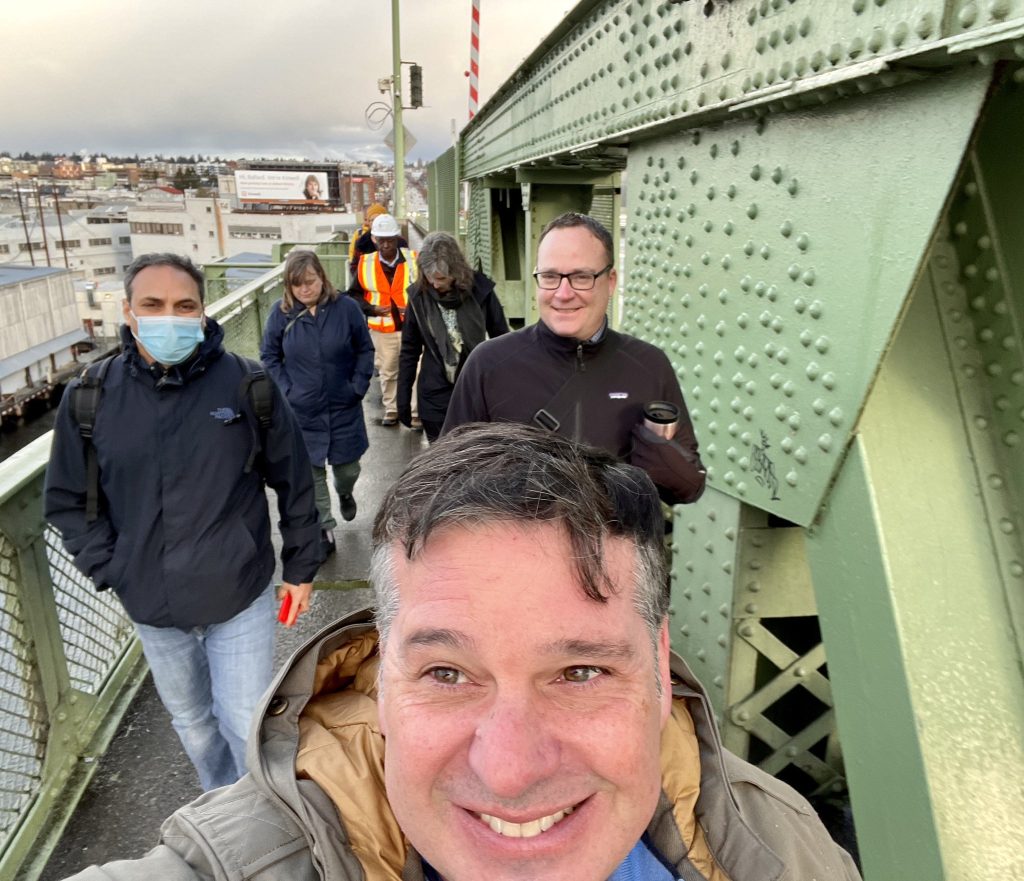
“When I came to Seattle, I promised our communities that I would center safety in every activity and program at SDOT,” Director Greg Spotts said in a statement to The Urbanist. “Rather than simply paving 15th Avenue NW and locking in an outdated street design, we listened to community members who asked for a safer and more crossable street. In our final design, you’ll see a new traffic signal to assist people walking and biking between the east and west parts of Ballard, and a new landscaped median to calm traffic and help create a gateway to the business district. These elements, along with additional markings for buses, will also help people taking RapidRide.”

“Ballard-Fremont Greenways would like to thank Director Spotts and the team at SDOT for listening to the overwhelming number of neighbors in Ballard who asked the City to consider the needs of all Ballard residents as part of this massive repaving project,” Bryant Mason, co-chair of Ballard-Fremont Greenways, said.
The new design elements will make 15th Avenue NW safer for pedestrians, bicyclists, and drivers and will reconnect communities and businesses in East and West Ballard, making our neighborhood even more welcoming to people of all ages and abilities.”
“We encourage City officials, business leaders, and WSDOT to support this vastly improved design for 15th Ave NW and to expedite construction,” Mason continued. “Every SDOT project should–first and foremost–be a safety project and we look forward to SDOT applying similar safety features to dangerous arterials in under-invested neighborhoods across Seattle.”
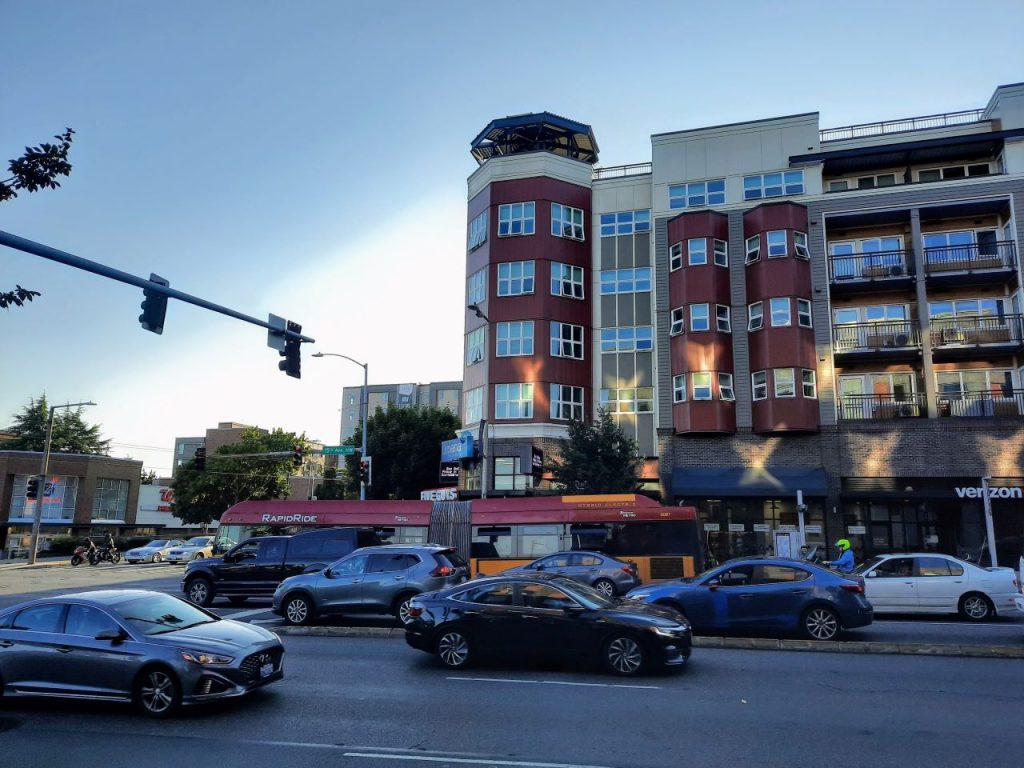
The overall process to get to this point has daylighted the current shortcomings of Seattle’s complete streets ordinance, passed in 2007 and strengthened several times, most recently in 2019. When Seattle repaves a street, SDOT is required to evaluate whether to add bicycle facilities if that route aligns with the city’s Bicycle Master Plan. But there’s nothing in city ordinance requiring safety elements that reduce vehicle speeds and increase access for pedestrians and cyclists, since those vary wildly from one project’s scope to another.
Internal reorganization happening right now at SDOT may lead to progress for integrating safety into projects earlier and more comprehensively, however. The department’s Vision Zero team, which had previously been housed under the project development division, as a spoke of the bicycle master plan team and the ADA team, was recently moved directly into the operations division, which has ultimate authority over how the city’s streets operate.
Another recommendation of the top-to-bottom review of the Vision Zero goals, the appointment of a chief transportation safety officer, could also lead to safety becoming more well-integrated into projects. Venu Nemani, who also serves as the city traffic engineer, recently stepped into this role, which oversees the entire Vision Zero team. This gets closer to Director Spotts’ promise that Vision Zero will no longer live in a “little pocket” of SDOT any longer.
Which isn’t to say that policymakers on the city council could not take steps to be more prescriptive about what kinds of safety elements SDOT should be including in all of the city’s projects. For right now, community pressure seems to still be needed to ensure that the city takes full advantage of major projects to make gains on safety and mobility. Along 15th Avenue NW, this translates to a big step forward.
Ryan Packer has been writing for The Urbanist since 2015, and currently reports full-time as Contributing Editor. Their beats are transportation, land use, public space, traffic safety, and obscure community meetings. Packer has also reported for other regional outlets including Capitol Hill Seattle, BikePortland, Seattle Met, and PubliCola. They live in the Capitol Hill neighborhood of Seattle.


